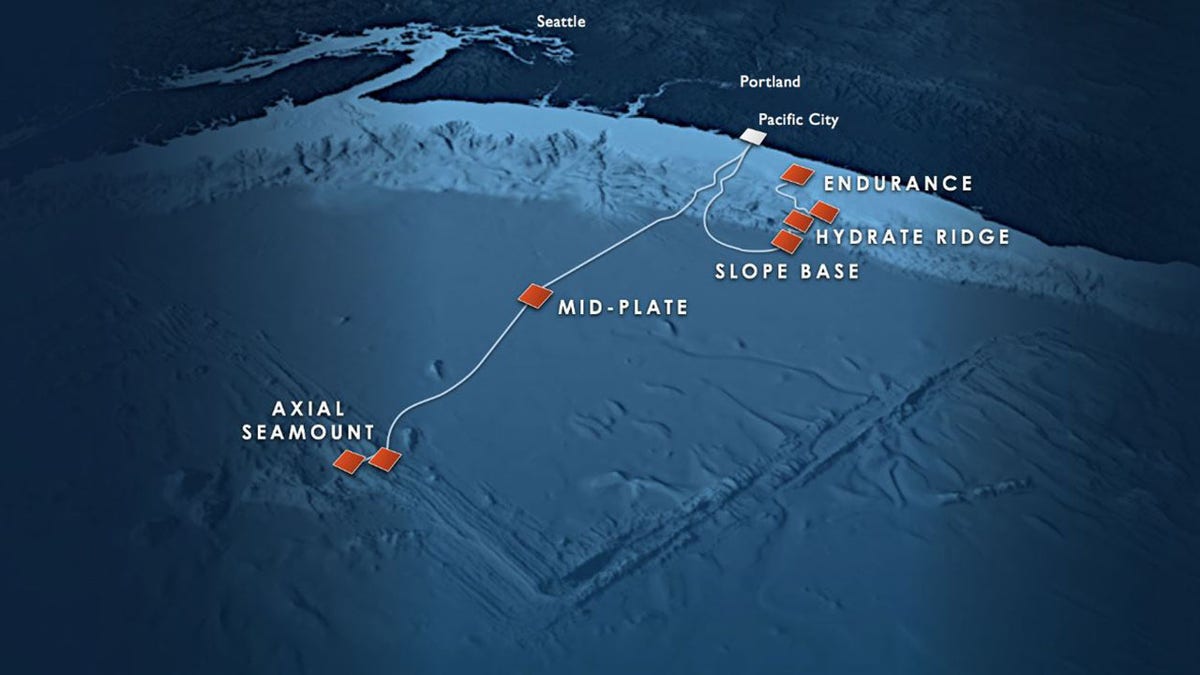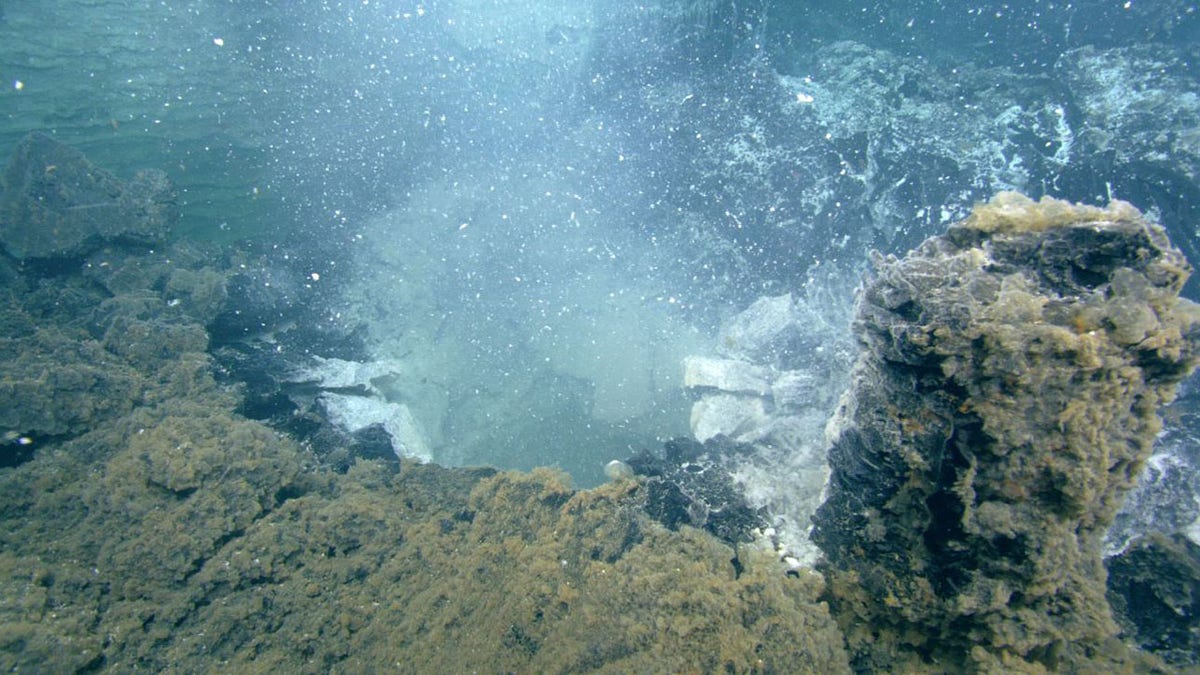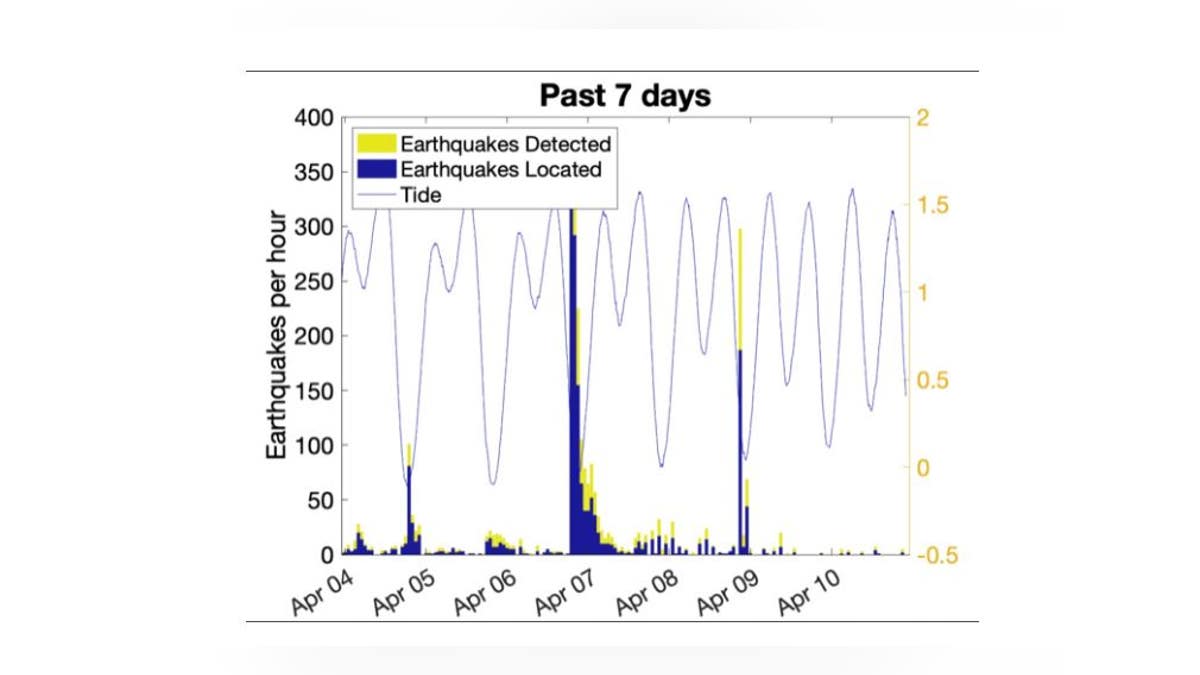An underwater volcano off the Oregon coast could erupt late this year, scientists say.
The volcano, known as Axial Seamount, is more than 4,900 feet beneath the Pacific Ocean and 300 miles off the Oregon coast, but it is showing signs it will soon erupt for the first time since 2015.
The volcano is formed by a hot spot, an area in the Earth’s mantle where hot plumes of molten material rise upward into the crust, the University of Washington's College of the Environment said in an April blog post. As the crust moves over the top of the mantle, the hot spot stays put, which results in long chains of volcanoes over time.
VIDEO: CHAOS IN BANGKOK AS APARTMENT BUILDING COLLAPSES, SENDING PEOPLE RUNNING

The Regional Cabled Array spans the entire Juan de Fuca tectonic plate, from the Oregon coast to the summit of Axial Seamount 300 miles offshore. (Ocean Observation Initiative via University of Washington )
"Over two-thirds of the Earth’s surface was formed by volcanic eruptions at these mid-ocean ridges," said Maya Tolstoy, a marine geophysicist and dean of the university's College of the Environment. "Axial Seamount is a direct result of these fundamental processes that continue to shape our planet today."
The eruption doesn't pose a danger, scientists said.
"Axial Seamount is much too deep and far from shore for people on land to even notice when it erupts. An eruption at Axial Seamount also has nothing to do with seismic activity on land, so Pacific Northwesterners don’t need to worry about this event triggering a major earthquake or tsunami," the blog post states.
The first sign of an eruption at the volcano will be a sharp increase in the number of earthquakes around it, the post states.
VIDEO: WATER CASCADES DOWN SIDE OF BUILDING IN BANGKOK FOLLOWING EARTHQUAKE

Microbes and their waste material stream from this "snowblower" vent on Axial Seamount three months after its eruption in 2011. (Ocean Observatories Initiative via the University of Washington )
"The volcano has already surpassed the inflation we observed in 2015, but the earthquake activity is still quite low," said Deborah Kelley, a professor at the UW School of Oceanography and director of the Regional Cabled Array. "We’re seeing 200 to 300 earthquakes per day, with some spikes around 1,000 per day due to the tides. If what we learned in 2015 is correct, I would expect to see more than 2,000 per day for a few months before the eruption."
The quakes will be caused by magma moving toward the surface, the post states.

Earthquake activity at Axial Seamount spikes at low tide. (Ocean Observatories Initiative via the University of Washington )
CLICK HERE TO GET THE FOX NEWS APP
"That period lasts about an hour, and then the magma reaches the surface," said William Wilcock, a professor at the UW School of Oceanography. "Lava flows spread across the caldera, and lava-filled fissures open up to the north or the south, reaching as far as 40 kilometers (about 25 miles).
"The seismic activity dies down pretty quickly over the next few days, but the eruption will continue slowly for about a month."
.png)
 German (DE)
German (DE)  English (US)
English (US)  Spanish (ES)
Spanish (ES)  French (FR)
French (FR)  Hindi (IN)
Hindi (IN)  Italian (IT)
Italian (IT)  Russian (RU)
Russian (RU)  7 hours ago
1
7 hours ago
1









Comments